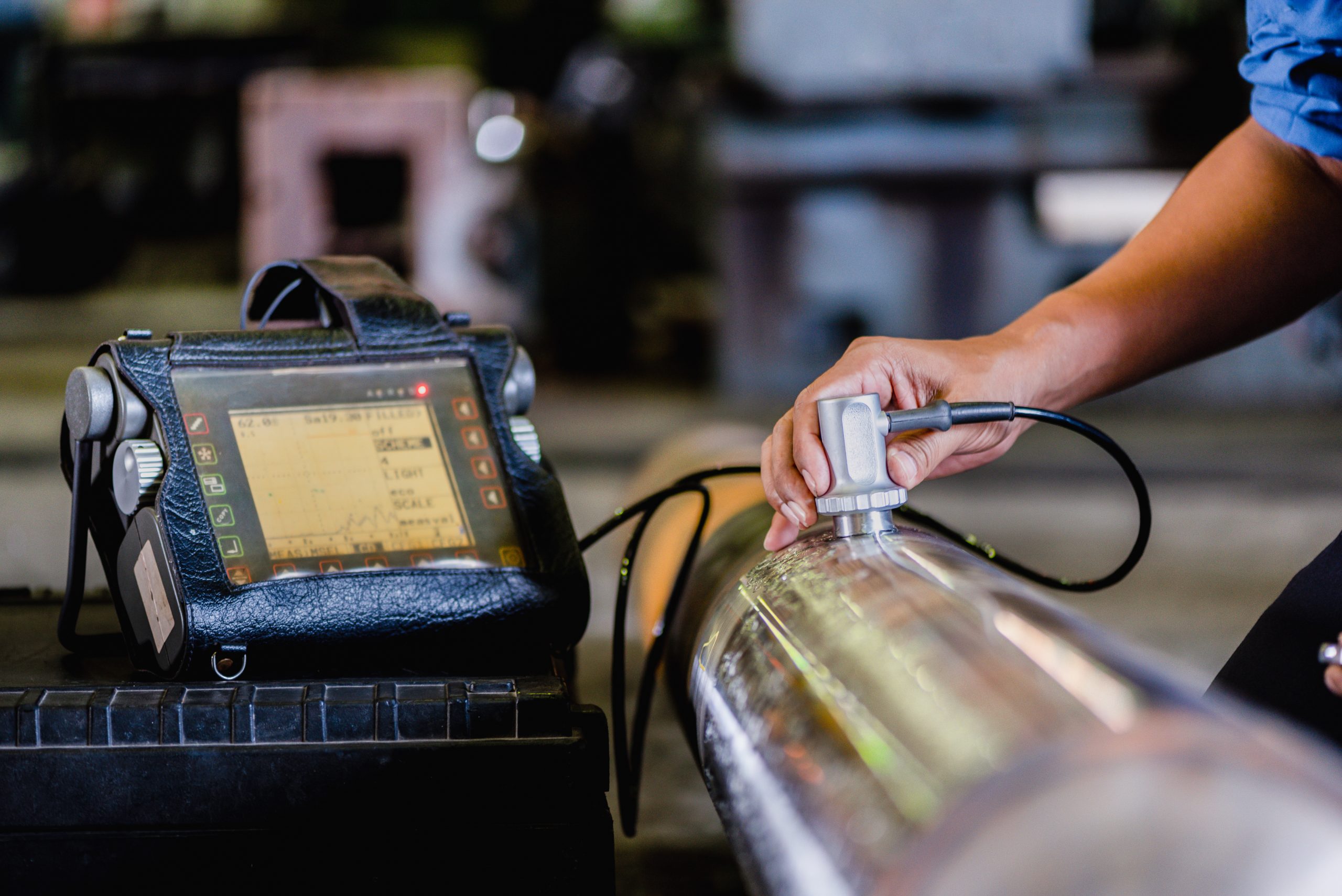NDT at The Welding Development Centre

This blog discusses The Welding Development Centre's Non Destructive Testing (NDT) capabilities we can offer to our clients.
What is NDT?
NDT is an effective way for engineering businesses to test for defects within materials and welded joints without causing damage to the tested product and can be done during fabrication or in service. This method can detect irregularities and identify areas of risk before they become problematic and cause failures in service.
Types of NDT methods
There are many types of NDT methods which are currently being used, some of them include:
- Phased Array Ultrasonic Testing (PAUT): This method is used to detect defects such as cracks which have been caused during fabrication or in service. PAUT probes allow for a focused beam of ultrasound which can be steered through a range of different angles and depths to detect any flaws.
- Ultrasonic Testing (UT): This method is the use of high frequency sound waves to detect imperfections in metals and other materials. These high frequency soundwaves travel through the material, when there are any issues detected (such as porosity) the energy will be reflected back letting you know an issue has been found.
- Magnetic Particle Inspection (MPI): This method is primarily used for crack detection on the surface of ferromagnetic materials. A magnetic field is used to identify any discontinuities in the test material. If a problem is encountered, a magnetic flux leakage occurs around the flaw.
- Dye Penetrant Inspection (DPI): This method type can be applied to both ferrous, non-ferrous and non-porous materials. The process includes applying the penetrant to the item using a brush or spray. The penetrant then soaks into any defects such as cracks and porosity. A developer is then applied to draw the penetrant out of the flaw, which creates a visible indication of the flaw.
- Visual Testing (VT): This is the oldest and most common method of NDT which includes an trained inspector using the naked eye under good illumination to assess for defects or damage. Visual inspection uses its own range of specialist equipment to improve the ability to assess an imperfection and sentence it against a standard to ascertain if it is a defect.
*The WDC offer all of the above methods in our range of NDT services*

What are the benefits of NDT?
There are several benefits of using NDT, including:
- Assessing equipment and materials for Fitness for purpose
- Compliance with Codes, standards, specifications and legislation
- Tested pieces are left undamaged
- Safe testing method
- Very accurate testing with recorded data.
- Cost effective
- Peace of mind
- Increased product reliability
NDT at The WDC
Our NDT services are highly flexible including short notice availability for in house or on-site testing. We aim to provide a swift and satisfactory response to all requests and aim to deliver reports to you within 24 hours. Our technicians work to procedures that are both written and approved by an ISO 9712 Level 3 and have all gone through a rigorous peer review process by external Level 3 NDE engineers.
Get in touch today for more information on our range of NDT capabilities!